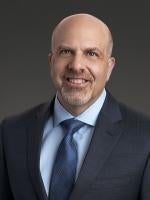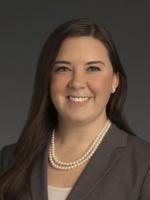A federal district court in New York struck down four components of the regulations adopted by the Department of Labor (“DOL”) pursuant to the Families First Coronavirus Response Act (“FFCRA”), four months after the regulations went into effect, and five months before the FFCRA is set to expire. State of New York v. U.S. Department of Labor, No. 1:20-cv-03020 (S.D.N.Y. Aug. 3, 2020).
As we previously summarized in an earlier advisory, the FFCRA includes the Emergency Family and Medical Leave Expansion Act (“EFMLEA”) and the Emergency Paid Sick Leave Act (“EPSLA”). On April 1, 2020, the DOL finalized “temporary” regulations, which went into effect immediately and described the obligations of employers and the rights of employees under the FFCRA’s EFMLEA and EPSLA mandates.
Shortly after the DOL issued its FFCRA regulations, the State of New York filed a lawsuit in federal court challenging some of the provisions. On August 3, the judge issued a ruling striking down four key provisions of the DOL’s regulations:
1. The definition of who qualifies for the healthcare provider exemption.
Under both the EPSLA and the EFMLEA provisions, an exemption to the paid sick leave and paid family leave requirements applies to an employer of “a health care provider or an emergency responder.” The DOL’s regulations contained a definition and examples of the term “health care provider” for purposes of determining who may be excluded by their employer from receiving leave under the FFCRA. According to the Court’s August 3 ruling, the DOL went too far in defining health care providers as “anyone employed at” a doctor’s office, hospital, medical school or a number of other facilities “where medical services are provided.” This definition is far broader than the definition of “health care provider” under existing Family and Medical Leave Act regulations.
The Court was unpersuaded by the DOL’s contention maintaining a broad definition of “health care provider” is necessary to “maintaining a functioning healthcare system during the pandemic,” finding the definition in the regulations “is vastly overbroad…in that it includes employees whose roles bear no nexus whatsoever to the provision of healthcare services, except the identity of their employers, and who are not even arguably necessary or relevant to the healthcare system’s vitality.”
2. The exclusion from benefits of employees whose employers do not have work for them.
The EPSLA grants paid leave to employees unable to work or telework due to a need for leave because any of six COVID-19-related criteria. The EFMLEA similarly applies to employees “unable to work (or telework) due to a need for leave to care for . . . [a child] due to a public health emergency.”
New York took aim at the DOL’s regulatory pronouncement that otherwise statutorily mandated paid leave under the Act is not available where the employer does not have work for the employee. The DOL’s “work-availability requirement,” as it is referred to by the Court, specifically applies to the use of leave under the EPSLA where (i) the employee is subject to a Federal, State, or local quarantine or isolation order related to COVID-19, or (ii) the employee is caring for an individual who is subject to a Federal, State, or local quarantine or isolation order related to COVID-19 or has been advised by a health care provider to quarantine; or under either the EPSLA or EFMLEA where the employee is caring for a child if the school or place of care of the child has been closed, or the child care provider is unavailable, due to COVID-19 precautions.
In support of its regulations, the DOL argued that, under such circumstances, the employee would not be able to work regardless of the need for leave. The Court, however, rejected the DOL’s argument. It found the differential treatment of the six EPSLA reasons “entirely unreasoned” and “manifestly contrary to the statute’s language, given that the six qualifying conditions share a single statutory umbrella provision…” Consequently, according to the Court, the work-availability requirement was not a permissible interpretation of the statute.
3. The requirement that employees secure consent for intermittent leave for certain qualifying reasons.
The DOL’s regulations permit “employees to take Paid Sick Leave or Expanded Family and Medical Leave intermittently (i.e., in separate periods of time, rather than one continuous period) only if the Employer and Employee agree,” and, even then, only for a subset of the qualifying conditions. Under the regulations, the exercise of intermittent leave is limited to “circumstances where there is a minimal risk that the employee will spread COVID-19 to other employees.”
The Court first confirmed that FFCRA leave need not be taken in a single block, with any unused leave forfeited. Rather, leave may be taken in various blocks for separate qualifying conditions, as long as the employee has leave remaining. Moreover, the Court agreed with the DOL’s position that, in some instances, intermittent leave is entirely barred for public health concerns when conditions “logically correlate with a higher risk of viral infection.” Thus, an employee experiencing symptoms of, diagnosed with, or exposed to COVID-19 may not return intermittently to the workplace as this would create a risk of transmitting the virus.
The regulations also provide that intermittent leave may apply in other circumstances that “do not implicate the same public-health considerations” – but only with employer approval. This limitation was rejected by the Court as “entirely unreasoned” and therefore impermissible.
4. The requirement that documentation be provided before taking leave.
The DOL regulations contain several provisions regarding appropriate documentation when an employee seeks to use leave under the EPSLA or EFMLEA. Specifically, the regulations note that the employee must provide documentation containing the following information prior to taking leave: (1) employee’s name; (2) date(s) for which leave is requested; (3) qualifying reason for the leave; and (4) a statement that the employee is unable to work because of the qualifying reason for leave.
While the FFCRA itself does not specify any documentation requirement, it notes the following with respect to employee notice — “After the first workday (or portion thereof) an employee receives paid sick time under this Act, an employer may require the employee to follow reasonable notice procedures in order to continue receiving such paid sick time.” (emphasis added). The Court vacated the part of the regulation’s documentation provision stating that employees must provide the required documentation before taking leave, finding the requirement inconsistent with the timing set forth in FFCRA notice provisions. In making this determination, the Court emphasized that: “The substantive aspects of the regulations documentation requirements, as opposed to the ‘temporal aspect’ described above, remain in effect.”
The Court’s decision leaves many important questions unanswered. Covered employers should take stock of the SDNY’s August 3 decision and its effect on their administration of paid leave requests under the FFCRA. While the impact of this ruling on employers, especially those located outside the New York City area, is unclear at this point, the safest approach would be to apply the FFCRA paid leave provisions in accordance with the district court’s interpretation. Employers, particularly those of health care providers, may very well begin to see employees exempted by the regulations applying for paid leave benefits, and should be prepared to respond to such requests. Due to the complexity of these issues, it is recommended that employers consult with counsel regarding FFCRA compliance.
In the meantime, we will be monitoring for further legal challenges to the DOL’s regulations in other jurisdictions and track the anticipated appeal of the district court’s August 3 decision. We will also be monitoring for DOL announcements regarding possible updates to its regulations and FAQs on the FFCRA.





 />i
/>i

